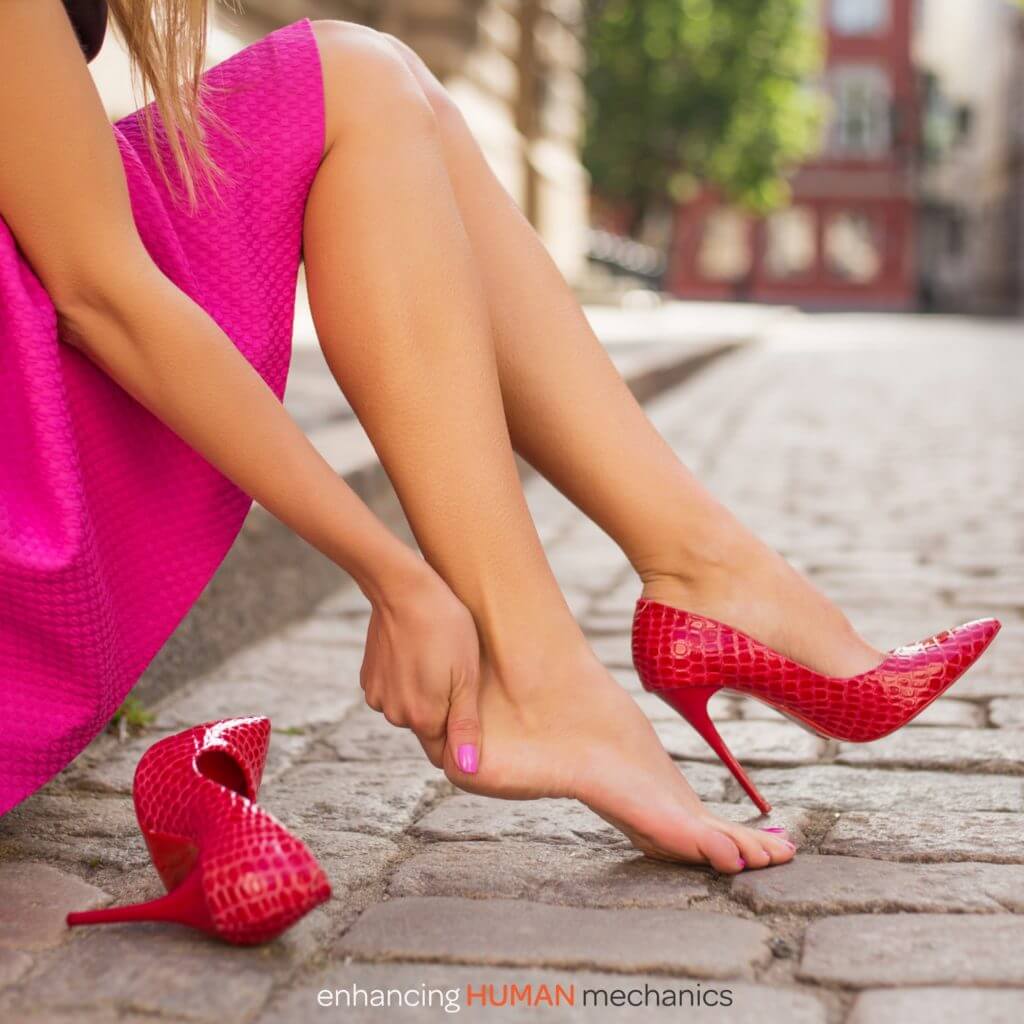Whether going out at night, or going to work, heels have become a popular fashion trend of modern society.
On any given day/night, you’re able to see someone wearing footwear with some sort of heel. Whether going out at night, or going to work, heels have become a popular fashion trend of modern society. Although they may be aesthetically pleasing, footwear with an elevated heel may be doing more harm than good for your body. We at Body Gears appreciate your personal sense of fashion but want to be the ones to educate you on best footwear for your health and wellness needs. Unfortunately, the higher the heel you wear, the more you may be hurting to your body.
When wearing high heels, you’re affecting your body negatively in several ways. First, wearing heels shifts your line of gravity. We’re all created to functionally ambulate and move around based on our body’s natural line of gravity which is suppose to lie directly between each foot parallel to a bone called the talus. When wearing high heels, our center of gravity is shifted, which alters the way in which we achieve locomotion. Not only does it affect the way we walk, but it also affects the way perform functional activities throughout the day.
Second, wearing heels shifts our center of gravity. Though it may be slightly variable from person to person, our center of gravity, different than our line of gravity, is generally located just in front of the 2nd level of our Sacral spine (S2). The shift in our center of gravity that high heels may cause is in the superior and anterior direction – up towards our head and forward out in front of our bodies. This is due to an increase from our natural height when standing. In this position, one compensates by standing with an increased lumbar extension (hyperlordosis). When functioning throughout the day in a too much lumbar extension, you put yourself at risk for all sorts of structural and soft tissue dysfunctions, both of which are contributing to low back pain. Increased activity of our muscles in the low back.
Finally, in a natural position our feet should be fully making contact with the ground. When standing in high heels the feet are in a plantarflexed position, which means the majority of our weight is translating through the front portion of the foot. More of our weight is on our midfoot and forefoot which has smaller bones and many more joint articulations. This provides an unstable base of support, decreasing our overall balance. During normal gait, or walking, it is normal for the knee to bend slightly at specific moments. When walking with a plantarflexed foot, you force the knee to bend 10-15 degrees more than it normally should. This now puts added stress through our kinetic chain, particularly at the knee. Our quadricep muscles begin to work even harder for the knee to support the weight of our body. Increased stress at any joint puts us at risk for joint breakdown, which may progressively develop into osteoarthritis.
If you’re one of those people who tend to wear high heels more often than not, and experience any degree of low back and/or knee pain, we can help you! Our physical therapists at Body Gears are trained movement experts who can help alleviate aches and pains but can appreciate your fashion!
Weitkunat T, Buck FM, Jentzsch T, Simmen HP, Werner CM, Osterhoff G. Influence of high-heeled shoes on the sagittal balance of the spine and the whole body. Eur Spine J. 2016;25(11):3658-3665.
If you liked this article please give us feedback and join the conversation. We would love to hear your suggestions on other science, anatomy, or movement topics you’d like to learn more about! Find us on Facebook, Instagram, and Twitter @BodyGearsPT.






